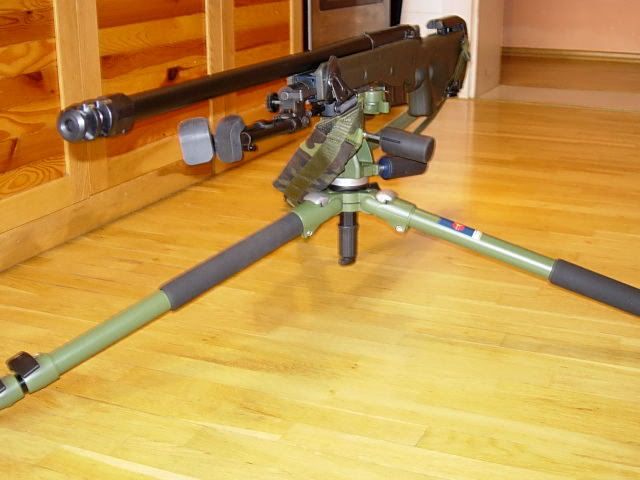I debated what heading to post this topic under. The "Beyond 1000" was chosen for two reasons;
- Even considering my limited number of posts, anyone looking for my comments could expect to find them here.
- The shooters most interested in an accessory item, of this quality and cost, could be expected to frequent this corner of the Hide.
In preface to anything which follows; drawings, commentary/explaination, material specifications, etc. are explicitly <span style="font-style: italic">public domain</span> information. I give my permission for any, and all, of what I post in this thread to be used by any individual, or manufacturer, that feels so inclined. Provincialism, and territoriality, occasionally impede development of even the simplest firearms accessories. The "Bipod", for reasons which remain unclear to me, appears to have fallen victim to this.
As I see it; a functional light-weight, bi-axial (vertical self-correction, and traversing axis capability), is a threshold requirement to progress in re-design of this component. I will post drawings soon, and invite reasoned criticism, comments, and suggestions.
In the interim, enumeration of collective complaints on existing designs would be helpful to me. Feel free...
"<span style="font-style: italic">What has been will be again, and what has been done will be done again; there is nothing new under the sun... </span>" Ecc 1:9-14
Best,
Noel
- Even considering my limited number of posts, anyone looking for my comments could expect to find them here.
- The shooters most interested in an accessory item, of this quality and cost, could be expected to frequent this corner of the Hide.
In preface to anything which follows; drawings, commentary/explaination, material specifications, etc. are explicitly <span style="font-style: italic">public domain</span> information. I give my permission for any, and all, of what I post in this thread to be used by any individual, or manufacturer, that feels so inclined. Provincialism, and territoriality, occasionally impede development of even the simplest firearms accessories. The "Bipod", for reasons which remain unclear to me, appears to have fallen victim to this.
As I see it; a functional light-weight, bi-axial (vertical self-correction, and traversing axis capability), is a threshold requirement to progress in re-design of this component. I will post drawings soon, and invite reasoned criticism, comments, and suggestions.
In the interim, enumeration of collective complaints on existing designs would be helpful to me. Feel free...
"<span style="font-style: italic">What has been will be again, and what has been done will be done again; there is nothing new under the sun... </span>" Ecc 1:9-14
Best,
Noel






